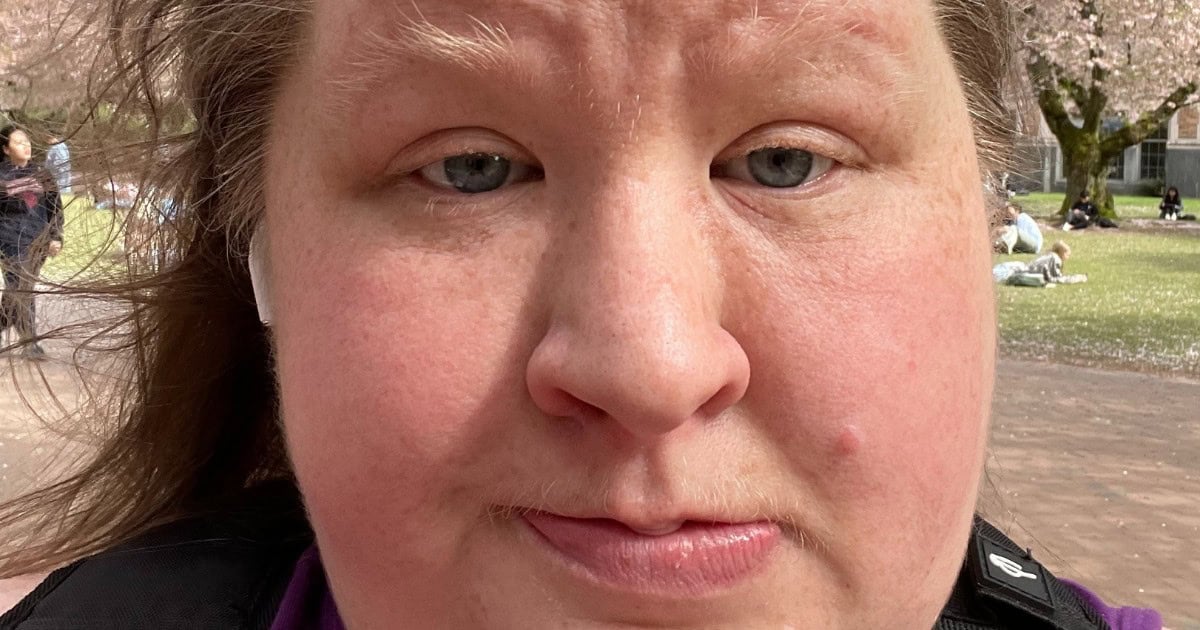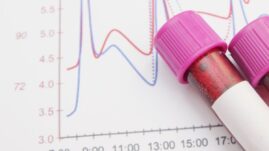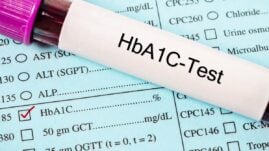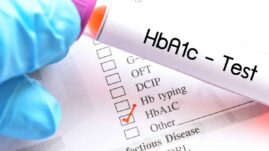Managing diabetes can be a lot to handle, but with improvements in medications and technology, it is becoming more doable every day.
We sat down with Wes Moran, who lives in Seattle and was diagnosed with type 2 diabetes two years ago, to discuss what steps she used to lower her A1c from over 10 percent to under 7 percent.

Key facts
- Using continuous glucose monitoring (CGM) technology, Wes Moran found motivation by seeing tangible improvements in her blood glucose levels.
- She adopted changes incrementally, including reducing sugary drinks, engaging in regular exercise, and incorporating medications, leading to a significant A1c reduction.
- Embracing tools like the Dexcom CGM and Happy Bob and Sugarmate apps for monitoring and motivation played a pivotal role in her journey toward achieving and maintaining her target A1c.
- Moran confronted a variety of hurdles but persisted with the help of technological upgrades, support systems, and a shift in mindset to overcome setbacks.
Table of Contents
- What motivated you to begin working toward a lower A1C?
- What specific changes did you make to your diet, exercise, or medication regimens?
- Did you find any technologies or tools particularly helpful?
- What were some of the biggest challenges you faced while trying to lower your A1c?
- Have you noticed any changes in your health or well-being since lowering your A1C?
- Has your daily life and overall outlook on life changed?
- What have you learned about managing diabetes that you wish you had known sooner?
- What advice would you give to others having difficulty lowering their A1c?
- Final thoughts
What motivated you to begin working toward a lower A1C?
Being new to life with diabetes, Moran didn’t realize having a lower A1c was even possible at first. After getting a CGM, however, things changed. She says she knew change was possible when she started using diabetes technology to manage her blood sugar levels.
“Seeing my blood glucose go under 200 mg/dL for the first time on my Dexcom made me realize change was possible. It made me see tangible change for the first time. Also, this sounds silly, but the stars that Happy Bob gives you are incredibly motivating.”
(Happy Bob is a motivational app that connects to real-time Dexcom data.)
What specific changes did you make to your diet, exercise, or medication regimens?
Moran started slowly at first. She says,
Change can be overwhelming. She continues,
“I was scared to start, but they’ve made such a difference.”
Did you find any technologies or tools particularly helpful?
Moran wholeheartedly adopted the use of technology to help manage her diabetes. She says,
“I use Dexcom. I think it’s made the biggest difference. Being able to see the changes has allowed me to be motivated to make more.”
“I also use Sugarmate. It’s on my iOS calendar, my computer’s dashboard, and my phone. I love Happy Bob as well. They give you two stars for every 5 minutes that you’ve been under 125 mg/dL and one star over 160. It keeps me motivated to get more stars.”
(Sugarmate is a diabetes tracking app that helps with Dexcom CGM data analysis.)
What were some of the biggest challenges you faced while trying to lower your A1c?
Like many others living with diabetes, Moran deals with depression. In fact, according to the U.S. Centers for Disease Control and Prevention (CDC), people with diabetes are two to three times more likely to have depression than people without diabetes.
Only between 25 percent to 50 percent of people with diabetes and depression are ever effectively diagnosed and treated.
Moran says,
“It really brings about a sort of action fatigue. When I wore the Dexcom G6, it sometimes became too much to change the transmitter. I’d forget, and sometimes I’d lose the transmitter. Sounds really silly, but it’s true.”
External pressures and diabetes stigma also didn’t help. She says,
“I also let someone get in my head, along with the general external pressure not to take insulin as someone with type 2 diabetes. I tried a couple of times to get off insulin and ended up making my diabetes worse, feeling distinctly like I felt upon or before diagnosis.”
She said she eventually overcame these challenges, however.
“Switching to the G7 helped me out of this latest funk. The fact that I don’t need to switch anything (the sensor and transmitter are combined into a single unit) helped out quite a lot. I’ve also gotten very into decorative patches and showing them off. The ability to overlap and not have a 30-minute waiting period is also helping. It refreshed my motivation.”

Some of Wes Moran’s decorative CGM patches.
Have you noticed any changes in your health or well-being since lowering your A1C?
Moran says,
“Oh my goodness, yes. So many things got better! I felt more stable and just normal. You feel really irrational and it’s hard to realize it when you have sustained hyperglycemia [high blood sugar]. It’s nice to be back to normal. I also don’t get a lot of infections anymore, and I used to feel like I got one every time I breathed wrong.”
Has your daily life and overall outlook on life changed?
Moran wants everyone to know that having diabetes doesn’t mean your life is over.
She says,
“I feel like I’m healthier now than I have been in decades. I’m exercising more and making more conscious diet choices. I also feel lucky to get to take the medications I take — they’re cardioprotective. Not everyone gets to have their levels checked to the extent I did in their 30s. I feel like my outlook for my 40s and 50s is better now because of how I’m protecting myself now.”
What have you learned about managing diabetes that you wish you had known sooner?
Moran wants everyone to know that maintaining a lower A1c doesn’t mean that your life will be boring or that you won’t ever get to enjoy your favorite foods ever again.
She says,
“It’s not a ‘boring food forever’ disease! There’s a tremendous amount of flexibility in diabetes. It’s not ‘you’re giving up everything you like forever,’ and that’s refreshing.”
What advice would you give to others having difficulty lowering their A1c?
Moran says that everyone needs community and help from others to succeed.
She says,
“Please don’t be afraid to ask for help. There are so many resources right now. Drugs aren’t the enemy! It’s not ‘either meds or diet.’ Medications actually help you adhere to a better diet (which is absolutely important to reduce your A1c). There’s so much hope and so many resources out there!”
She continues,
“Sometimes as a person with type 2 diabetes, we feel the pressure to do it all ourselves. I cannot emphasize enough how OK it is to let doctors and your community help you.”
Final thoughts
Wes Moran’s story highlights the power of persistence, technology, and community support in managing diabetes. She reminds us that with the right tools, support systems, and mindset, life with diabetes can be vibrant, fulfilling, and filled with possibilities.
Feeling motivated to lower your A1c? Read How to Lower Your A1c: The Complete Guide and How to Lower A1c Naturally.




